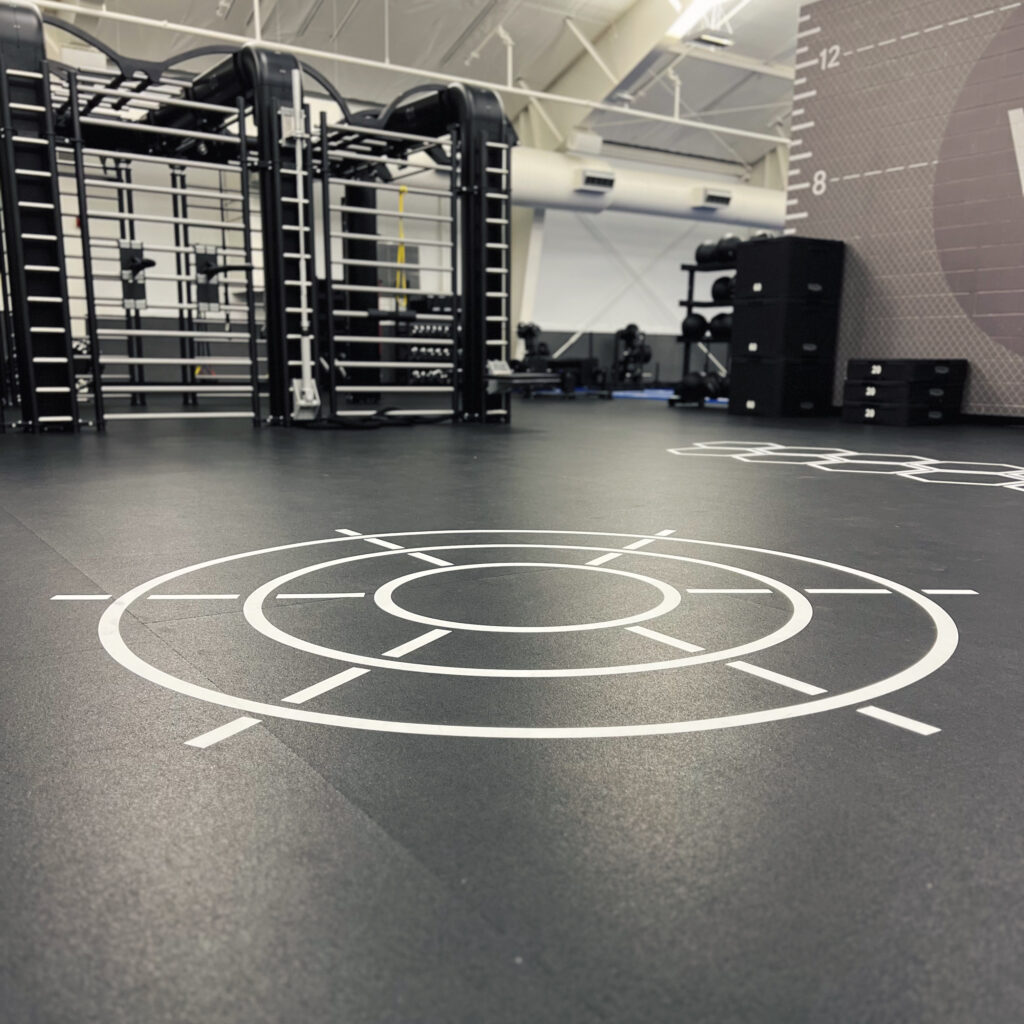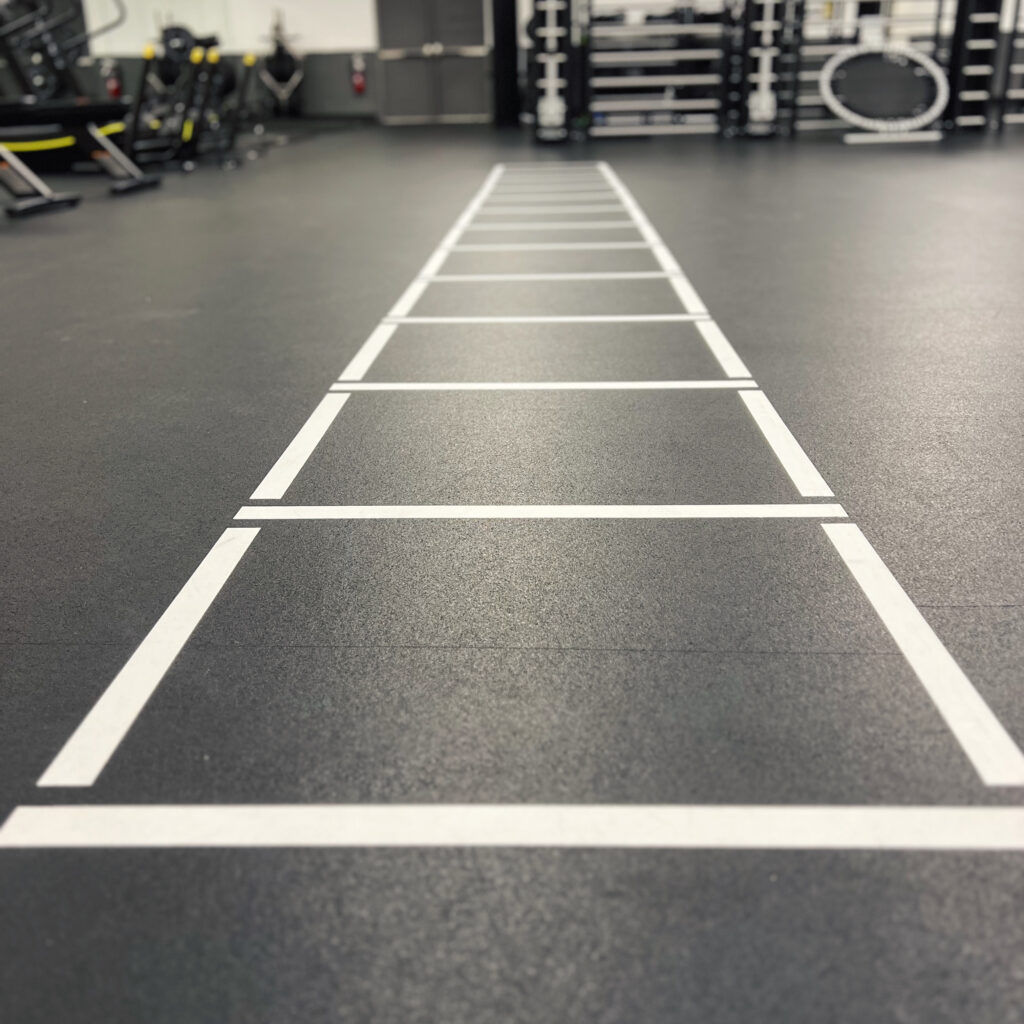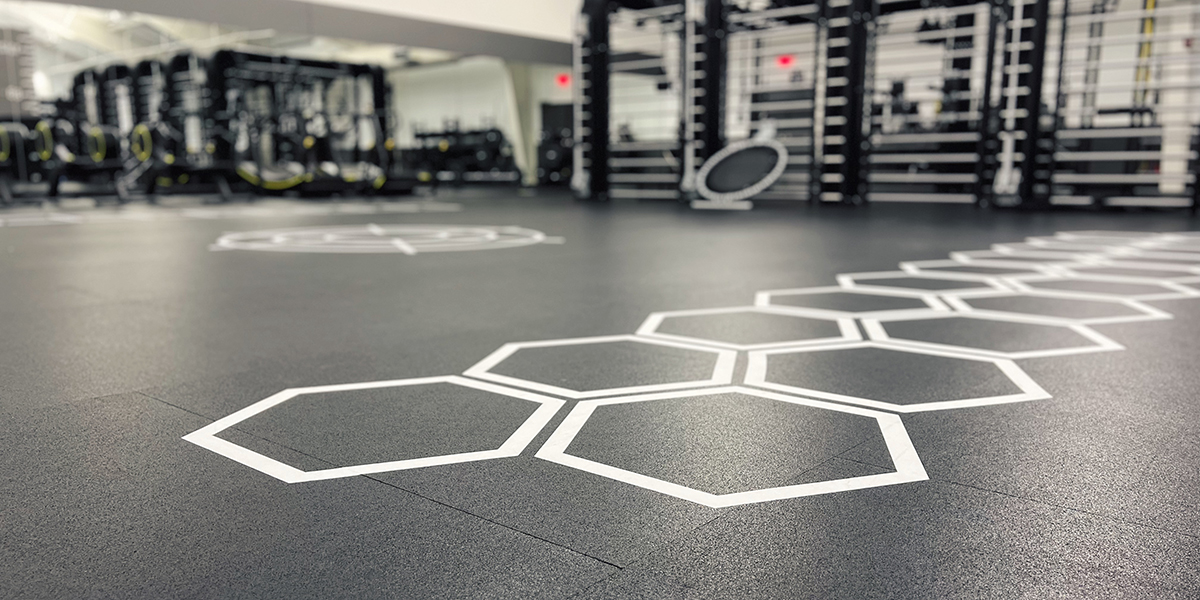WRITTEN BY WOODSIDE DIRECTOR OF TRAINING, JOHN BEANE
Picture this: it’s match point and you’re in the middle of an epic rally. Even the members in the Pilates Studio have their eyes glued to Court 1! Your opponent indicates that they’re going to hit a drop shot to the left then out of nowhere mother nature presents an unexpected wind gust that adjusts the trajectory of the ball to the right. Channeling your inner Serena you stop on a dime, drive through the instep of your left foot, shift your center of gravity back to the right and extend every extendable part of your body, delivering the winning forehand! The Woodside Tennis community will never be the same. Now picture this: you’re at the grocery store on a Sunday morning walking down the baking aisle and all of a sudden you find yourself in the awkward “do I go left or do I go right” predicament with another shopper. We’ve all experienced it, and it never goes as planned. Inevitably you both go left and then you both go right maybe even a few more times to really make it uncomfortable. Eventually you dart left Pacheco-style leaving the other shopper in a state of disbelief at your movement prowess!
Both scenarios laid out above are extremely different, but both demonstrate the fact that many of our daily activities are unpredictable and dictate the need for proficiency in regard to movement variability. The first question is what can we do to prepare ourselves for the unpredictable scenarios of everyday movement variability. The second question is how can we incorporate this into our programs. And the third question is why does everyone on the planet grocery shop on Sunday morning?
Two of our favorite ways to prepare Training clients for performance and safe everyday movements is with agility and change of direction (COD) training. Though the terms “agility” and “change of direction” are often used interchangeably, recently the literature has distinctively separated the two. Put simply, agility involves reactive abilities in unpredictable environments, whilst change of direction speed focuses purely on physical ability and is typically performed in pre-planned environments. Our focus for this article will be on change of direction training. As usual, this is a big topic so this article will provide an overview, but you can expect more on the subject over the coming months.
To give a little more context into the differences below is a definition and example of the two.
AGILITY
A rapid whole-body movement with change of velocity or direction in response to a stimulus. An example of this would be mirror drills using cones. Place a set of cones 5 yards apart. Your partner shuffles left to right randomly and you react to their movements by shuffling the same direction as quickly as possible.
Stimulus: Your Partner’s Movement
Skill: Reactive (Open) – Lateral Footwork
Quality: Agility
CHANGE OF DIRECTION
A pre-programmed rapid whole-body movement with change in velocity or direction of movement. An example would be the L Drill (3 Cone) which is used to test change of direction proficiency in athletic testing. Cones are placed five yards apart in the shape of the letter ‘L.’ The player must sprint to the second cone, turn around, sprint back to the first cone and touch it. They then reverse again, sprinting toward the second cone and passing it to reach the third cone. The player runs around the third cone, heading past the outside of the second cone to the first cone. This all must be done in the fastest time possible.
Stimulus: None
Skill: Non-Reactive (Closed) – Acceleration, Deceleration, Speed
Quality: Change of Direction
Change of Direction training is all about preparing for the unpredictable and making sure that you have the capabilities to react, move and recover while minimizing the risk for injury. It’s no different than other forms of training in that we train to prepare so that when our physical capabilities are in line with movement demands we optimize performance in various environments.

A staple in our change of direction programming is the agility ladder. It can be a bit confusing here because the piece of equipment we are referring to is traditionally called an agility ladder, but by definition of the modality we are actually training change of direction due to the fact that we are using non-reactive or closed drills as opposed to open or reactive drills. The latter of the two is possible, but for this article we are sticking with closed, pre-planned patterns.
The agility ladder is probably the most utilized tool in the club setting for the type of training we are describing in this article. Most agility ladders are made of nylon straps and plastic. The good news for us here at Woodside is that our ladders are decaled on the floor in The Playground rather than physical objects, so there is no risk of slipping, tripping or becoming a human version of a tangled ball of Christmas lights. Below are some programming recommendations and sample protocols describing how to utilize our agility ladders.

PROGRAMMING RECOMMENDATIONS
1A. Frequency Per Week:
2-3 x Per Week (5-15min)
1B. Volume Per Session:
Distances: 5-10 (± 2.5) yards
Repetitions: 3-6 (± 2) each
Sets: 1-2 each
Rest: – Reps < 90s – Sets < 120s
1C. Intensity:
Low Intensity: 75% or Slower (Technical Efforts)
Single Pattern (Non-Reactive)
Pattern Sequence (Non-Reactive)
Active Recovery + Motor Pattern Rehearsal
Physiological Changes: Improved Endurance
High Intensity: >95% (Full Speed Efforts)
Single Pattern (Non-Reactive)
Pattern Sequence (Non-Reactive)
Full CNS Demand + Neuromuscular Changes
Complete Recovery In-Session (48hrs Between)
Check out our Instagram Reel for sample workouts.
Our Training team can help you incorporate Agility Ladders into your workout routine. To learn more click here or email us.


